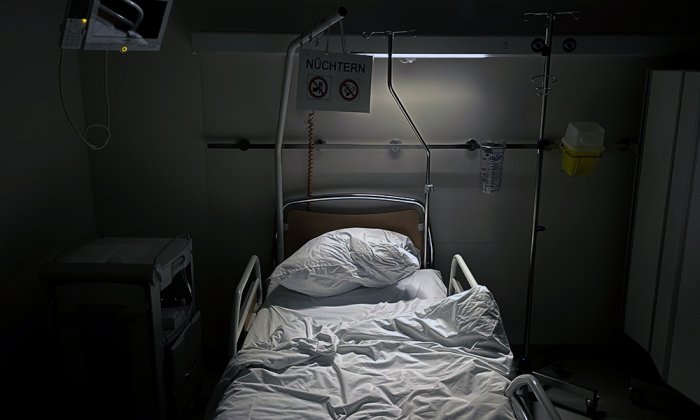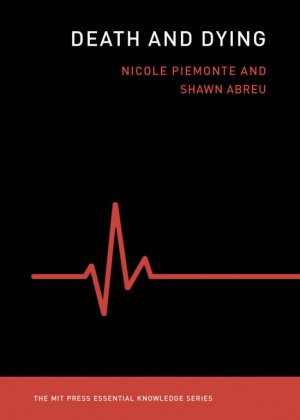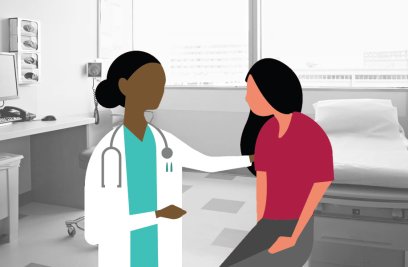Reckoning With Medicine’s Rescue Fantasy

Shawn Abreu is a medical doctor who is fellowship-trained in hospice and palliative medicine. Nicole Piemonte is an assistant dean at a medical school as well as a researcher with a focus in medical humanities and end-of-life care — an academic career shaped by the experiences of losing both her mother and father to cancer while she was a young adult. Because of their shared personal and professional interests, the authors wrote “Death and Dying,” from which the following article is adapted, together to highlight the ways that medicine and medical education can fall frighteningly short when it comes to helping physicians learn to care well for patients at the end of life.
It may seem a strange principle to enunciate as the very first requirement in a hospital that it should do the sick no harm.
—Florence Nightingale
Medical school did not prepare me for what it would be like to be a resident — a brand-new doctor making decisions for real patients. Six months after graduation I was still looking over my shoulder to make sure people weren’t talking to the person behind me when they started a sentence with “doctor.”
When you’re in medical school, the decisions you make for patients are never your own; there is always someone more senior checking your work and making sure you don’t hurt anyone because of your naivete or hubris. Perhaps this was the reason I was so unprepared for failure when I began really taking care of patients during my residency. Not my own failures necessarily, and not even the failures of the medical system, though those failures are plenty. As strange as it sounds to say, I was completely unprepared for the inevitable failure of the human body.

While death was everywhere in medical school — cadavers, specimens, even dead patients — we never talked about human finitude or the fragility of being mortal. Instead, we learned about “fixing” biological breakdowns, how to detect physical or psychological pathology and effectively intervene. So I graduated from medical school as a full-grown adult with childlike notions of fixing and curing and saving — ideas shaped by heroic efforts on TV shows. I thought that even when things went badly for patients, those of us in medicine would be there to turn things around and save the day. And I thought that in those rare cases when we couldn’t save someone, we’d be angry and disappointed, we’d mumble a reluctant time of death, defeatedly stomp out of the room to find a distraught family, and offer the assurance that “we did everything we could.”
“I’d only been taught how to prolong life, or at least improve mortality and stave off death for a while longer.”
This rescue fantasy did not seem improbable to me, in part because I’d seen patients seemingly come back from the dead before. I watched a cold, blue, seven-year-old boy pulled from his backyard pool leave the hospital four days later, laughing and waving as his parents paraded him down the hallway in a plastic red wagon. I saw a mother of three, whose lung infection would have undoubtedly killed her just years before the invention of the artificial lung that saved her life, leave the ICU and hug her young kids whom she hadn’t seen in weeks. These were the things I’d expected to see in medical school, and I did see them — and they were more beautiful than I’d ever imagined.
But I was also there for the moments when we’d tried to rescue patients and couldn’t, and these instances hurt worse than I’d ever imagined. In a way, I expected these moments too. I knew patients would die. What I wasn’t prepared for were the times when we would actively intensify pain and suffering, when we would break ribs during chest compressions and shove a breathing tube through vocal cords and down the larynx when there was no hope for recovery, when patients were old or fragile or terminally ill, or when they never wanted to die that way. After events like that, I didn’t feel like I’d done something heroic. Mostly I felt guilty about what we had done.
The reality of these situations became clearer to me during my early clinical experiences in the emergency department (ED) of my university’s hospital when we were notified that a rapidly declining patient would be coming in by ambulance. As a young medical student, this news was both terrifying and exciting. In my mind, it seemed like an opportunity to learn how to handle a code blue, engage in resuscitative efforts, and save a life.
Mrs. McGaugh was 73 years old and suffering from end-stage kidney disease when she arrived. She’d been dependent on renal dialysis for years to maintain kidney function and had decided to stop her dialysis treatments just six days prior. Her daughter had called 911 when she saw that Mrs. McGaugh was confused and disoriented.
At this point in my training, I had no idea why someone would choose to stop something that was extending their life. (A recent study of nearly 2,000 patients who discontinued dialysis found that they had an average life span of just 7.4 days.) I’d only been taught how to prolong life, or at least improve mortality and stave off death for a while longer. Listening to lectures and studying how to do that, how to intervene and attempt to fix pathological biological breakdowns, was more than enough to keep me occupied all hours of the day and many hours of the night.
When Mrs. McGaugh arrived, I was shocked to find one of the skinniest people I’d ever seen. Her cheeks were quite literally hollow, and her eyes, which were only half opened and unseeing, sunk back into her skull. Her skin was ghostly pale and yellow, and her mouth was hanging open. She looked much more like the cadaver I’d dissected in the anatomy lab than any living person I’d ever seen. I had to squint to see the faintest rise and fall of her chest, and only seeing that with my own eyes could reassure me that she was, in fact, alive.
For just the briefest moment, I questioned whether a person in her state could actually be resuscitated.
The paramedics gave a quick overview of Mrs. McGaugh’s condition, relaying to the ED doctor her daughter’s request for us to “do everything we can to save her.” Two IVs were instantly placed in Mrs. McGaugh’s veins, and the well-orchestrated concert of emergent resuscitation commenced. My job was to learn everyone else’s job, know what to do, and know how to look for reversible causes of Mrs. McGaugh’s unresponsiveness. That final task, however, was confusing to me. I wasn’t quite sure her condition was reversible given that her failing kidneys were the underlying cause. She had elected to stop her hemodialysis treatments so then, wasn’t her death expected? For what reason were we attempting to resuscitate her? To restart a heartbeat so that she could spend a few days on a breathing machine, largely unresponsive and incredibly uncomfortable until she eventually died from the kidney failure that was already happening?
The medical team jumped into action and did what they’d been trained to do. Mrs. McGaugh’s thin body cracked and heaved as a nurse, now standing on a step stool at the side of the bed, pressed her palms quickly and firmly into Mrs. McGaugh’s chest, just like I’d practiced on a mannequin a few months earlier. I watched as the resident at the head of the bed squeezed a bag attached to a mask that was over Mrs. McGaugh’s mouth, forcing air into her lungs. Minutes later, it was obvious that wasn’t enough, and I heard the attending physician say that we needed to intubate the patient. I stared wide-eyed as the attending helped the resident with the intubation, tilting Mrs. McGaugh’s head back and pushing a plastic tube into her mouth and down her throat. I stood aside for what felt like an eternity, watching her chest expand and collapse in heaving breaths.
I was startled back to reality by a nurse’s booming voice, telling me it was my turn to take over chest compressions. I nodded nervously before I shuffled over to the side of the bed. I placed my hands on Mrs. McGaugh’s impossibly delicate chest bones. For the first few compressions, I recited the Bee Gees’ “Staying Alive” in my head to ensure the right rhythm, around 100 compressions per minute, just like I’d been taught. I concentrated intensely, trying to maintain circulation without completely crushing her frail chest.
We worked away on Mrs. McGaugh’s body, trading spots at the side of the bed, for nearly 40 minutes before the attending called time of death. When it was called, no one stomped out of the room like I’d always imagined. No one seemed surprised that Mrs. McGaugh died despite our efforts. In fact, no one said anything at all. Every person left the room, except for one nurse who looked for a towel to cover Mrs. McGaugh’s exposed body. I stayed back for a moment longer — I didn’t know what else to do.
Eventually I made my way out of the room and into the narrow hall, where I stood alone for a minute, bewildered by the whole thing. Why had we done all that to a woman who had almost no chance of meaningful recovery, who had chosen to stop the medical treatment that had been keeping her alive for years? Why did we inflict so much pain right before she died?
The simple answer is that we were asked to do it. The more unsettling answer is that for most of us in medicine, it’s all we know to do.
Doctors are trained to “cure” disease, to fix the body. Almost all medical students are taught to see the body as an anatomical, biological, or biochemical structure that is best known and understood through the methods of science as well as the impartial observations of the medical professional. Most students learn to intervene in order to restore a biological breakdown rather than to consider the complex dynamics of life that contribute to health and illness or to care well for patients whose bodies can no longer be treated or cured.
This might have been why I was so surprised to learn as a medical student that only about 15 to 20 percent of patients walk out of the hospital after a code like the one Mrs. McGaugh endured. And that’s a number for all patients of all ages, including healthy people who experience a trauma that requires resuscitation. This percentage decreases quickly with age and illness severity. When it comes to a critically ill person with cancer in the ICU, the odds of walking out of the hospital after cardiopulmonary resuscitation (CPR) may be as low as 2.2 percent.
What is more, the process of “bringing back” the person does not often end well. Many will have broken ribs — some studies suggest that upward of 97 percent of patients end up with rib fractures — and for those who do survive codes, poor quality of life after survival is common. In many cases, patients are left with a brain injury from cardiac arrest, with only 3 to 7 percent of patients able to return to their previous level of functioning after experiencing CPR in the hospital.
When I encountered Mrs. McGaugh, I didn’t yet know the dismal statistics associated with CPR. I also didn’t know why someone would want to stop a treatment that could keep them alive. So later on during my shift, I pulled up Mrs. McGaugh’s chart in the EHR to see if there was any indication of why she’d made the decision to stop dialysis.
A systematic review from 2017 showed that only about 37 percent of U.S. adults have designated a medical power of attorney, and less than 30 percent have completed living wills.
While I was able to at least try to piece together Mrs. McGaugh’s story, doing so was not easy. Electronic records are notoriously difficult to navigate. Discovering anything about who Mrs. McGaugh was as a person before she died was like searching for the proverbial needle in a haystack. Although her record contained a “social history” noting that Mrs. McGaugh was a nonsmoker who did not consume alcohol or drugs, it was hard to glean much else.
With a lot more digging, I finally came across a note from a social worker that gave me some sense of Mrs. McGaugh’s background, along with some disturbing information in her record. Embedded within the countless pages of data was a clear trend toward physical decline. In the last six months, she had been hospitalized four times — infections, falls, and faints — and had steadily lost weight, eventually becoming the 79-pound, five-foot, three-inch person who was brought to our ED. I also found a few quotes from Mrs. McGaugh documented by the doctor who oversaw her care during her most recent hospital stay. It seems Mrs. McGaugh told the doctor that she didn’t want any more dialysis treatments, explaining that she’d seen “how this goes with my Gerald.” (Gerald was her husband, who died many years earlier from complications related to his diabetes.) She’d said that she felt like too much of her time was spent getting treatments. “Gerry suffered miserably in the hospital,” she’d said. “I don’t want to go out like that.”
It seemed obvious to me that Mrs. McGaugh understood what was happening to her and wanted to die outside the walls of the hospital. She was experiencing a profound loss of independence that prevented her from engaging in the parts of her life that mattered most. After seeing what her husband went through, she did not want the end to look the same for her.
Yet no one ensured that the end would be different for Mrs. McGaugh. Why was this so? Why didn’t her daughter know what she wanted? Had anyone talked to Mrs. McGaugh’s family about what was going on with her? Had Mrs. McGaugh even talked to her family about it? Why didn’t we, those of us responsible for her medical care, support her in what seemed to be such a simple and reasonable request?
While I cannot say for certain what transpired between Mrs. McGaugh and her daughter, her daughter’s request to “do everything” seemed to indicate that she was either unaware of her mother’s decision to stop dialysis, didn’t understand why her mother would want to do so, or simply didn’t understand what the process of dying would look like once dialysis ended. It was obvious there was no medical plan to support Mrs. McGaugh’s hope to not “go out like that.” Without clear communication and support between the health care team, the patient, and the patient’s family, it makes sense that her daughter called the paramedics and asked them to do everything they could to save her mother, despite what her mother really wanted.
After reviewing Mrs. McGaugh’s record, it seemed she had clearly articulated her wishes to multiple practitioners. Nevertheless, like so many others, she did not write down her wishes. A systematic review from 2017 showed that only about 37 percent of U.S. adults have designated a medical power of attorney, and less than 30 percent have completed living wills. Even among people with chronic illnesses, only 38 percent had completed advance directives.
While I’d like to believe that if patients like Mrs. McGaugh had filled out advance directives, their wishes would’ve been known and respected, the reality is much more complicated. The reality is that it can be difficult for health care practitioners to access advance directives or find them in patients’ records. Sometimes the documents aren’t scanned into the EHR, or are scanned into the EHR at one hospital but not accessible in the EHR at another hospital. In emergent situations like Mrs. McGaugh’s — even if patients have advance directives — the documents may be so difficult to find that patients still might receive unwanted, aggressive interventions at the end of life.
Though it seems like such critical information would be readily available to health care professionals, this is, too frequently, not the case. Physicians are often left making judgment calls in the midst of uncertainty, defaulting to “doing more,” since to not intervene when someone would’ve wanted more would be a hard decision to live with. As a result, these default decisions are made even in circumstances where there is little to no chance of a patient’s meaningful recovery.
There are real logistical reasons, system failures, and interpersonal dynamics that lead to someone like Mrs. McGaugh dying in a way she never would have wanted. But perhaps even more tragic than these material failures is that the momentum created by medicine’s preoccupation with fixes, cures, and interventions is so relentless that even documented code statuses and accessible advance directives will never stop it.
Physician-writers including Atul Gawande, Paul Kalanithi, and Jessica Nutik Zitter speak to what it’s like to swim upstream. They have written brilliant, thoughtful books that point to medicine’s myopic focus on cure and highlight the need for a different kind of care. Gawande and Nutik Zitter, for instance, advocate for hospice care and palliative medicine, lauding their ability to offer whole person, compassionate care to patients, particularly those at the end of life. Their work has been critical in bringing to light medicine’s strange relationship with aging and dying. And yet despite their work and the public attention it has brought to the way so many people die in the U.S. medical system, the principles guiding hospice and palliative medicine — whole person care, comfort, and quality of life — have not yet penetrated mainstream medicine. Every day, patients still die like Mrs. McGaugh.
Documenting peoples wishes with advance directives barely scratches the surface of what it should look like for us to support people through to the end.
I fear this will be the case until we all summon the courage to put aside the rescue fantasy and face uncertainty together. Documenting peoples wishes with advance directives barely scratches the surface of what it should look like for us to support people through to the end. Can we imagine people not only dying in ways consistent with their goals, but also having expert medical guidance, physical comfort, emotional validation, and spiritual meaning-making every step along the way?
Just a few months ago, I took care of a 17-year-old kid who loved dry humor and playing the guitar, and who also was dying of brain cancer. Just two weeks before he died, he told me that what he feared the most was “the day all the doctors come in and no one can look me in the eye — and they tell me there’s nothing more they can do.”
This young kid knew what was in store for him; he knew there would come a time soon that his doctors would tell him there were no more options for him, that there was nothing else they could do to treat his brain tumor. And he also knew that we, his providers, would not be up to the task of facing the void with him. He knew we would ultimately look away, defeated.
Too frequently, it’s at this crucial juncture that traditional disease-directed medicine leaves patients with the same resounding message: There is nothing more we can do. And so often, it is not until this final moment, bereft of hope, that someone like me in palliative medicine is called in at the 11th hour to walk alongside patients on their final journey when we’ve only just met.
Nicole M. Piemonte is Assistant Dean for Medical Education at Creighton University School of Medicine in Phoenix. She is the author of “Afflicted: How Vulnerability Can Heal Medical Education and Practice” and coauthor, with Shawn Abreu, of “Death and Dying,” from which this article is adapted.
Shawn Abreu is a medical doctor fellowship-trained in hospice and palliative medicine.




